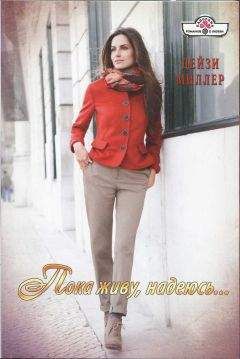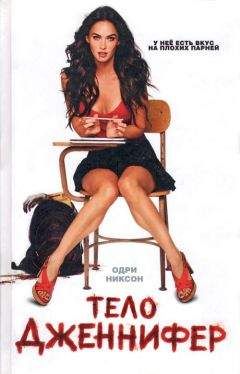Ричард Овери - Сталин и Гитлер
13 (1946); A. S. Milward ‘Hitlers Konzept des Blitzkrieges’, in A. Hillgruber (ed.) Probleme des Zweiten Weltkrieges (Cologne, 1967), pp. 19–40.
94. For a survey of all these preparations see BA-B R26 I/18 ‘Ergebnisse der Vier jahresplan-Arbeit’, spring 1942, pp. 5–95. ‘He [Hitler] gave economic policy the task of making the economy ready for war in the space of four years…’ (p. 1).
95. Akten zur deutschen auswärtigen Politik Ser. D., vol. i (Baden-Baden, 1950), p. 27, ‘Niederschrift über die Besprechung in der Reichskanzlei’, 5 November 1937.
96. Overy, War and Economy, pp. 148–59.
97. BA-B R26IV/4 ‘Besprechung über die Eingliederung Sudetendeutschlands in die reichsdeutsche Wirtschaft’, 3 October 1938.
98. IWM, EDS AL/1571 Thomas minute, 20 June 1940.
99. BA-B R2501/6585, Reichsbank memorandum 24 August 1939, appdx 1.
100. P. Temin ‘Soviet and Nazi economic planning in the 1930s’, Economic History Review, 44 (1991), p. 585.
101. H. von Kotze and H. Krausnick (eds) ‘Es spricht der Führer’: 7 exemplarische Hitler-Reden (Gütersloh, 1966), pp. 176–7, speech of 24 Febuary 1937 to construction workers.
102. IWM Case XI Pros. Doc. Book 112, Neumann lecture The Four Year Plan’, 29 April 1941, p. 294.
103. Temin, ‘Soviet and Nazi planning’, p. 584; J. Chapman Real Wages in Soviet Russia since 1928 (Cambridge, Mass., 1963), p. 166.
104. Chapman, Real Wages, pp. 144, 146–8. R. di Leo Occupazione e salari neirURSS 1950–1977 (Milan, 1980), p. 122 calculates that average monthly wages rose in money terms by a factor of 10.8 from 1928 to 1950, but prices by a factor of 11.8. D. Filtzer ‘The Standard of Living of Soviet Industrial Workers in the Immediate Postwar Period, 1945–1948’, Europe – Asia Studies, 51 (1999), pp. 1015–16. On German wages G. Bry Wages in Germany 1871–1945 (Princeton, NJ, 1960), pp. 264, 362. On wage policy T. Siegel ‘Wage Policy In Germany’, Politics and Society, 14 (1985), pp, 5–37.
105. See BA-B R2501/6581 Reichsbank ‘Zur Entwicklung des deutschen Preis-und Lohnstandes seit 1933’, appdx 6, which shows a range of increased weekly earnings against 1933 of – o.8 per cent (book production) to 26.0 per cent (metalworking).
106. Filtzer, ‘Standard of Living’, p. 1019.
107. J. Hessler ‘Postwar Normalisation and its Limits in the USSR: the Case of Trade’, Europe – Asia Studies, 53 (2001), pp. 445–8.
108. O. Nathan and M. Fried The Nazi Economic System (London, 1944).
109. On textiles League of Nations World Economic Survey 1936/7 (Geneva, 1937)” p. 150; H. Häuser, Hitler against Germany: a Survey of Present-day Germany from the Inside (London, 1940) p. 109.
110. On the legal framework BA-B R3102/3602, A. Jessen ‘Die gesteuerte Wehrwirtschaft 1933–1939’, pp. 61–2. See too J. Stephenson ‘Propaganda, Autarky and the German Housewife’, in D. Welch (ed.) Nazi Propaganda (London, 1983), pp. 117–38; F. Grube and G. Richter Alltag im ‘Dritten Reich’: so lebten die Deutsche 1933–1945 (Berlin, 1992), pp. 169–71; W. Bayles Postmarked Berlin (London, 1992), pp. 40–41. in. Hessler, ‘Postwar Normalisation’, p. 448.
111. Hessler, ‘Postwar Normalisation’, p. 448.
112. A. Sommariva and G. Tullio German Macroeconomic History, 1880–1979 (London, 1987), p. 59; Hubbard, Soviet Money and Finance, pp. 111–13.
113. On noiseless fi nance L. Schwerin von Krosigk Stats bankrott: Finanzpolitik des Deutschen Reiches 1920–1945 (Göttingen, 1974), pp. 297–9; W. A. Boelcke Die Kosten von Hitlers Krieg (Paderborn, 1985), pp. 103–4. On increased saving see BA-B R7 XVI/22 O. Donner ‘Die Grenzen der Staatsverschuldung’.
114. Kravchenko, I Chose Freedom, p. 476; Thyssen, I Paid Hitler, pp. 47–9.
115. See for example J. Heyl ‘The Construction of the Westwall: an Example of National Socialist Policy-making’, Central European History, 14 (1981), pp. 71–4.
116. Kravchenko, I Chose Freedom, pp. 323–5.
117. Zumpe, Wirtschaft und Staat, pp. 341–2.
118. Kravchenko, I Chose Freedom, p. 328.
119. Tooze, Statistics and the German State, pp. 239–44, on problems of data collection; Harrison, Soviet Planning, pp. 26–7.
120. See for example Fitzpatrick, ‘Ordzhonikidze’s Takeover of Vesenkha’, pp. 158–67.
121. R. J. Overy Goering: the cIron Man’ (London, 1984), pp. 53–60, 62–8; on his special powers Reichsgesetzblatt, 1936, Part I, p. 887.
122. Munting, Economic Development, p. 105; Dunmore, Stalinist Command Economy, pp. 19–20; Temin, ‘Soviet and Nazi Planning’, p. 575; S. Fitzpatrick ‘Blat in Stalin’s Time’, in S. Lovell, A. Ledeneva and A. Rogachevskii (eds) Bribery and Blat in Russia: Negotiating Reciprocity from the Middle Ages to the 1990s (London, 2000), pp. 169–76.
123. D. R. Shearer Industry, State, and Society in Stalirfs Russia 1928–1934 (Ithaca, NY, 1996), pp. 235–6.
124. R. W. Davies ‘Making Economic Policy’, in Gregory, Behind the Faqade, p. 75.
125. See for example F. Bajohr Parvenüs und Profi teure. Korruption in der NS-Zeit (Frankfurt am Main, 2001).
126. Overy, War and Economy, pp. 14, 164–6.
127. T. Emessen (ed.) Aus Göring’s Schreibtisch: ein Dokumentenfund (Berlin, 1947), pp. 81–3.
128. Khlevniuk, In Stalin’s Shadow, pp. 51–2.
129. S. N. Frokopovicz Russlands Volkswirtschaft unter den Sowjets (Zurich, 1944), p. 2–57.
130. E. Belova ‘Economic Crime and Punishment’, in Gregory (ed.), Behind the Facade, pp. 145–52.
131. Y. Gorlizki ‘Rules, Incentives and Soviet Campaign Justice after World War IF, Europe – Asia Studies, 51 (1999), pp. 1247–52, 1260.
132. Filtzer, ‘Standard of Living’, p. 1027.
133. Gorlizki, ‘Rules, Incentives and Campaign Justice’, p. 1253.
134. Reichsgesetzblatt, 1936 Part I, p. 1015, ‘Gesetz gegen Wirtschaftssabotage’.
135. BA-B R26/II Anh./i H. Dichgans ‘Zur Geschichte des Reichskommissars für die Preisbildung’, pp. 4–6.
136. BA-B R7/2149, Otto Ohlendorf, ‘Grundsätze der nationalsozialistischen Wirtschaftspolitik’, p. 4. See too D. Majer, Grundlagen des nationalsozialistischen Rechtssystems (Stuttgart, 1987), pp. 152–3; H. Woll Die Wirtschaftslehre des deutschen Faschismus (Munich, 1988), pp. 92–6.
137. J. N. Hazard, I. Shapiro and P. B. Maggs (eds) The Soviet Legal System (New York, 1969), pp. 384–6.
138. A. Nove, An Economic History of the USSR (London, 1992).
139. W. E. Butler Soviet Law (London, 1988), pp. 180–85; J. R. Millar The Soviet Economic Experiment ed. S. Linz (Urbana, 1990), pp. 115–20.
140. Hazard etaL, Soviet Legal System, pp. 402–3; Butler, Soviet Law, p. 189.
141. G. Ambrosius Der Staat als Unternehmer: öffentliche Wirtschaft und Kapitalismus seit dem 19. Jahrhundert (Göttingen, 1984), pp. 64, 79; NA Microcopy T83, Roll 74, Economics Ministry memorandum ‘Der Zuwachs an staatlichen Unternehmungen in Privatrechtsform’.
142. NSDAP, Der Parteitag der Arbeit, pp. 36–8, Hitler’s speech to the party congress, 13 September 1937.
143. Thyssen, I Paid Hitler, p. 49.
144. A. Barkai From Boycott to Annihilation: the Economic Struggle of German Jews, 1933–1943 (Hannover, NJ, 1989); F. Bajohr ‘Arisierung’ in Hamburg: Die Verdrängung der jüdischen Unternehmer 1933–1945 (Hamburg, 1997).
145. A. Müller-Armack Wirtschaftslenkung und Marktwirtschaft (Hamburg, 1947).
146. G. Bordiugov ‘The Bolsheviks and the National Banner’, Russian Studies in History, 39 (2000), pp. 82–3, 89.
Глава 11
1. J. Stalin Problems of Leninism (Moscow, 1947), pp. 460–61.
2. W. Treue ‘Hitlers Denkschrift zum Vierjahresplan 1936’, Vierteljahrshefte für Zeitgeschichte, 3 (1955), pp. 204–5.
3. Treue, ‘Hitlers Denkschrift’, p. 205.
4. A. Hitler The Secret Book ed. T. Taylor (New York, 1961), p. 25.
5. Imperial War Museum, FO 645 Box 162, testimony of Fritz Wiedemann at Nuremberg, 9 October 1945, p. 23.
6. V. I. Lenin Imperialism, the Highest Stage of Capitalism (Peking, 1965), p. 6: preface to the French and German editions.
7. J. Stalin Works (13 vols, Moscow, 1952–55), vol. xii, p. 182, letter to A. M. Gorky, 17 January 1930.
8. M. von Boetticher Industrialisierungspolitik und Verteidigungskonzeption der UdSSR 1926–1930 (Düsseldorf, 1979), pp. 164–6; J. Erickson The Soviet High Command: a Military-Political History 1918–1941 (London, 1962), p. 284.
9. Boetticher, Industrialisierungspolitik, p. 166.
10. M. von Hagen Soldiers in the Proletarian Dictatorship: the Red Army and the Soviet Socialist State, 1917–1930 (Ithaca, NY, 1990), pp. 204–5.
11. von Hagen, Soldiers in the Proletarian Dictatorship, p. 203.
12. R. Pennington ‘From Chaos to the Eve of the Great Patriotic War, 1922–41’, in R. Higham, J. T. Greenwood and V. Hardesty (eds) Russian Aviation and Airpower in the Twentieth Century (London, 1998), p. 39; see too W. S. Dunn Hitlers Nemesis: the Red Army, 1930–1945 (Westport, Conn., 1994), p. 27.
13. J. W. Kipp ‘Mass, Mobility, and the Origins of Soviet Operational Art, 1918–1936’, in C. W. Reddel (ed.) Transformations in Russian and Soviet Military History (Washington, DC, 1990), p. 95.
14. H. Shukman (ed.) Stalin’s Generals (London, 1993), pp. 220–23; P. A. Bayer The Evolution of the Soviet General Staff 1917–1941 (New York, 1987), pp. 152 ff.
15. I. S. Bloch Modern Weapons and Modern War: Is War Now Impossible? (London, 1900).
16. A. J. Echevarria After Clausewitz: German Military Thinkers before the Great War (Lawrence, Kans., 2000), pp. 85–7, 201–4.
17. E. Ludendorff The Nation at War (London, 1935), pp. 22–3.
18. D. Fensch and O. Groehler, ‘Imperialistische Ökonomie und militärische Strategie: eine Denkschrift Wilhelm Groeners’, Zeitschrift für Geschichtswissenschaft, 19 (1971), pp. 1170–77, ‘Bedeutung der modernen Wirtschaft für die Strategie’, c. 1927/8.
19. Boetticher, Industrialisierungspolitik, p. 209.
20. Bayer, Evolution of Soviet General Staff, pp. 152–3; Erickson, Soviet High Command, pp. 293–4.
21. L. Samuelson Plans for Stalin’s War Machine: Tukhachevskii and Military-Economic Planning, 1925–1941 (London, 2000), pp. 11–15, 17–18, 37–8; Boetticher, Industrialisierungspolitik, p. 207.
22. Samuelson, Plans for Stalin’s War Machine, pp. 22–3.
23. Y. Dyakov and T. Bushuyeva (eds) The Red Army and the Wehrmacht: How the Soviets Militarized Germany, 1922–1933 (New York, 1995) pp. 18–26; on the ‘Statistical Society’ see B. A. Carroll Design for Total War: Arms and Economics in the Third Reich (The Hague, 1968), pp. 54–7, 64–71. See too E. W. Hansen Reichswehr und Industrie: Rüstungswirtschaftliche Zusammenarbeit und wirtschaftliche Mobilmachungsvorbereitungen, 1923–1932 (Boppard am Rhein, 1978).
24. Hitler, Secret Book, pp. 5, 15.
25. Treue, ‘Hitlers Denkschrift’, p. 206.
26. Stalin, Problems of Leninism, pp. 520–21, ‘Address to graduates from Red Army Academies’, 4 May 1935.




